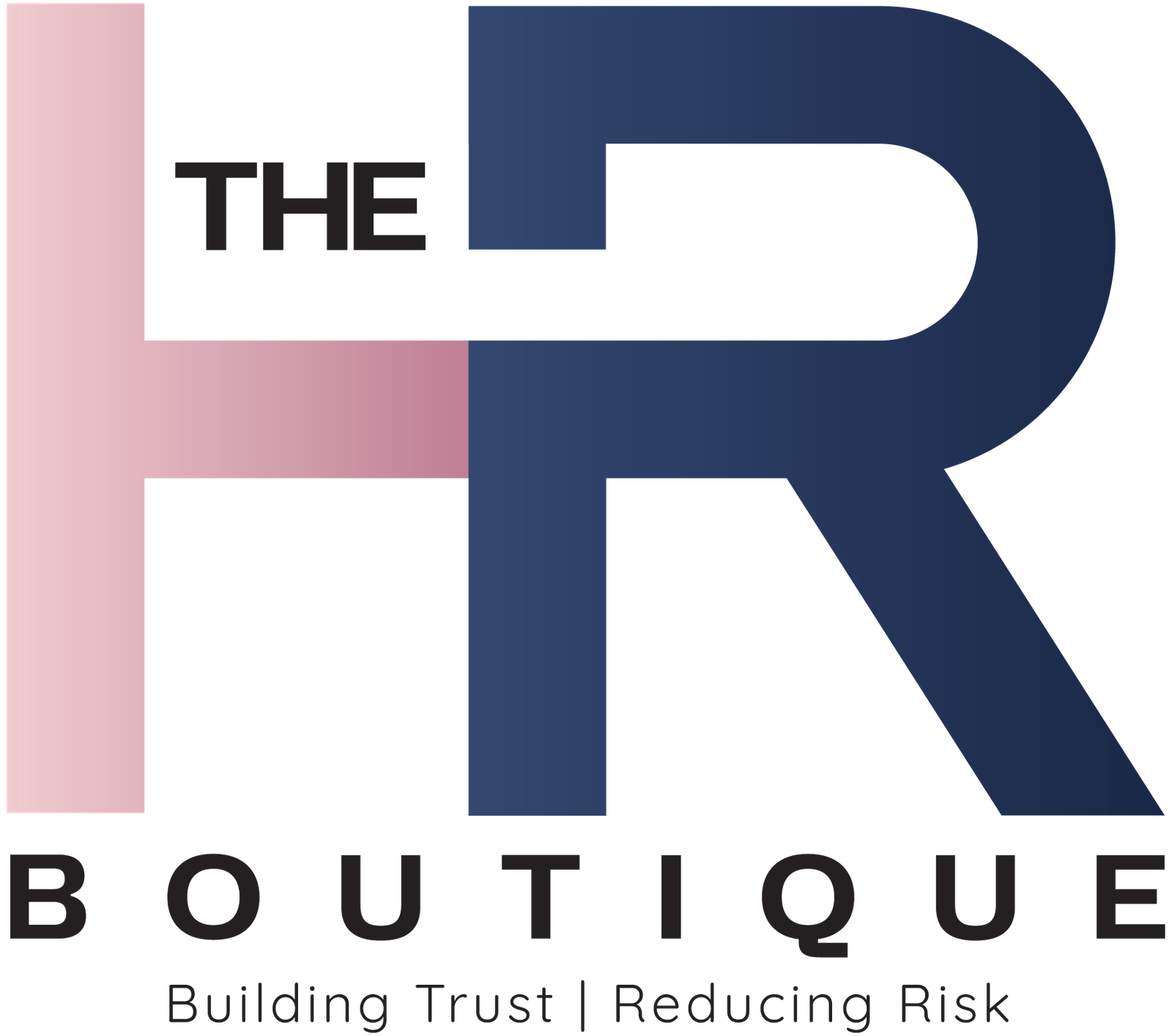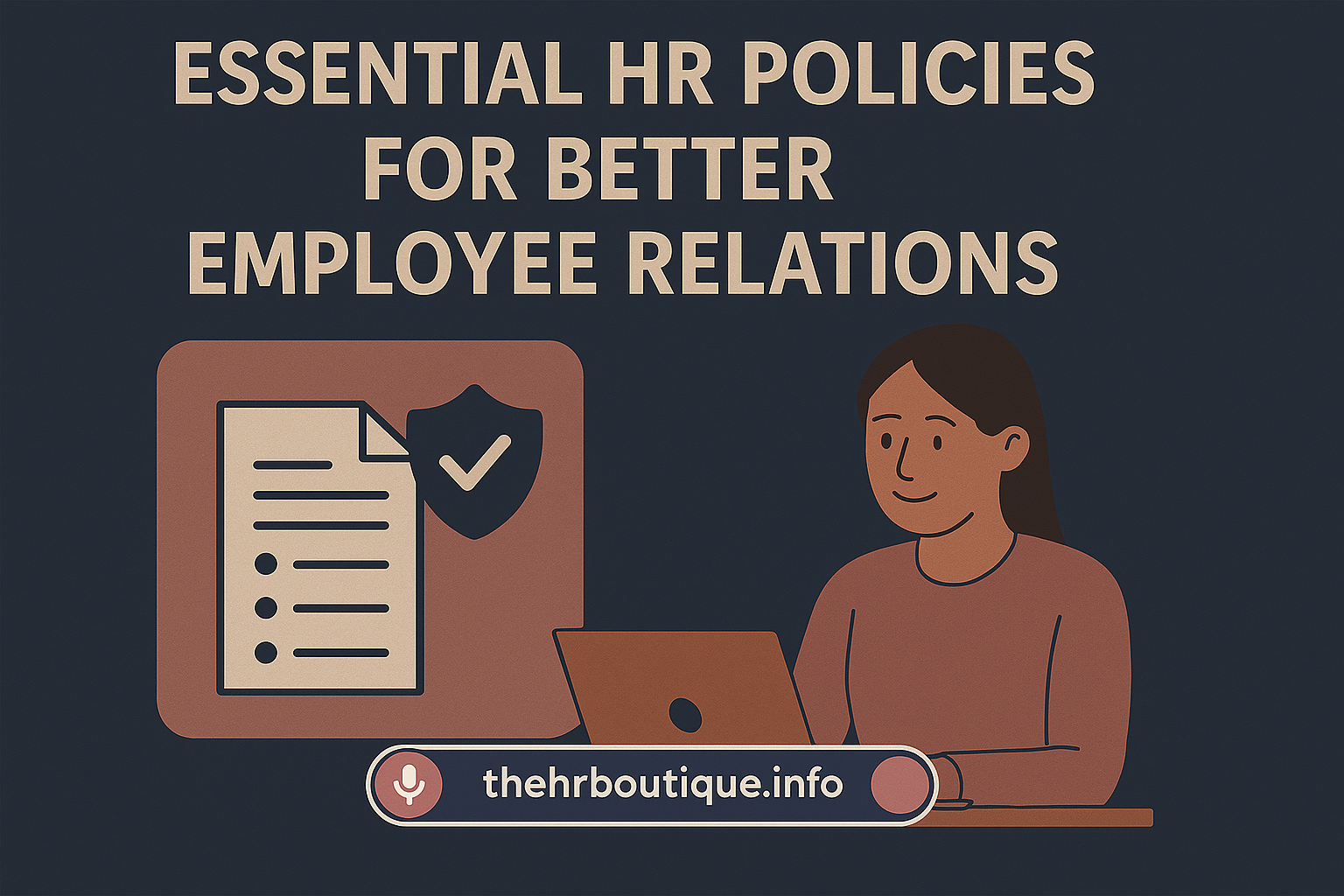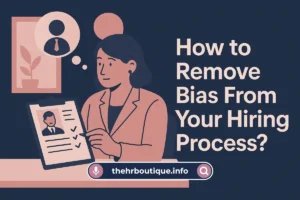Here’s a question every HR manager or founder quietly asks. How do you cut through the noise and give your company the right policies without drowning in templates that nobody reads?
Right now, you might have policies that feel outdated, too long, or impossible to enforce. Or maybe you’re starting from scratch, and you’re worried you’ll miss something critical and leave your business open to risk. But what if you could put a stop to policy bloat and finally feel confident about compliance, culture, and manager consistency, all at once?
In this article, you’ll discover twelve essential HR policies that actually work. These aren’t generic rules. Each one creates clarity, trust, and fairness in your workplace. You’ll get exactly what matters most for stronger employee relations in 2025, with no filler and no confusion. Ready to see which policies build real trust? Keep reading.
1. Code of Conduct and Anti-Harassment Policy
Imagine a workplace where everyone knows what respectful behavior looks like. A code of conduct turns this from a vague idea into clear action. It answers the real-world question employees have: Will I feel safe here?
With anti-harassment rules, you create an environment where every employee knows they’re protected and that retaliation is not an option. But it’s not just about preventing issues. When employees see that their company takes respect seriously, trust grows.
They speak up more, drama drops, and real problems get solved quickly. In 2025, digital communications like group chats and team platforms need to be included. Cover not only what happens in person, but also the tone and behavior in emails, DMs, and video calls.
By giving employees the “why” behind each rule, you also help them understand the impact of their choices. That’s how you turn policy into everyday culture.
2. Equal Employment Opportunity and Accommodation Policy
Picture an office where fairness isn’t just a claim, but a reality. Equal employment opportunity isn’t only about compliance, it’s about building a foundation of trust and respect.
This policy tells everyone that discrimination based on race, gender, religion, disability, or any protected status will never fly here. Employees want to know the process for asking for what they need to succeed. With a clear accommodation process, they see the company is ready to help, not hinder.
And that matters. When people feel seen and supported, they put in more effort and stick around longer. In 2025, you’ll need to monitor new leave and accommodation requirements as more states update their laws.
By writing this policy in plain English, you show employees you’re serious about inclusion. The end result? Fewer misunderstandings, stronger loyalty, and a workplace that attracts top talent.
3. Workplace Safety and Incident Reporting Policy
What would your team say if you asked them, “Do you feel safe at work?” A strong safety policy means employees know how to report risks, what actions will follow, and who will listen.
This isn’t about checking a box. When employees see that safety is a leadership priority, their focus and morale rise. They trust the process and each other more.
In today’s world, this also means addressing remote work setups, ergonomic guidance, and mental health emergencies. Employees want to know that if something happens—at home or on site—they’ll get real support.
A fast, simple reporting channel reduces worry and prevents small issues from growing into big incidents. Your safety policy becomes a proof point that you value every person on your team, every single day.
4. Leave and Time-Off Policy
Time is personal. That’s why time-off policies can make or break employee relations. A strong leave policy gives employees what they crave most: predictability and respect.
They know when they can take vacation, how sick days work, and what happens if a family emergency hits. For managers, it provides a simple playbook so no one has to guess or make up rules as they go.
When your time-off policy spells out exactly how PTO, parental leave, holidays, and unpaid leave function, people feel valued. For 2025, review how your policies handle leave payout, carry-over, and remote work flexibility.
If your company operates in more than one state, double-check local requirements. When employees trust the rules, they stop worrying about unfair treatment. That kind of clarity lowers stress and helps everyone focus on their work instead of their worries.
5. Timekeeping and Overtime Policy
How do you prevent those dreaded “I was underpaid” complaints? Start with a clear timekeeping and overtime policy. Employees need to know what counts as work, how to track hours, and what happens if they work overtime—on site or remote.
Inconsistent application erodes trust quickly. Your policy should cover how to approve overtime, who gets paid for required training, and what to do about late-night emails or urgent calls after hours.
For 2025, be sure you reflect the new overtime rules and any wage changes in your jurisdiction. When everyone understands the rules, surprises vanish. Employees feel secure that their pay is accurate, and managers gain confidence in every approval they give.
This level of transparency is a simple fix that prevents big problems and keeps employee relations healthy.
6. Performance and Progressive Discipline Policy
No one likes to feel blindsided at work. A transparent performance and discipline policy prevents that. When you outline the steps for coaching, warnings, and improvement plans, employees know what to expect if things go wrong.
This clarity reduces anxiety, especially in times of change. For managers, it’s a roadmap that removes guesswork and minimizes claims of favoritism.
In 2025, add clear rules around new tools like generative AI and tech-driven productivity checks. The best discipline policies don’t just protect the company—they help employees learn, grow, and get back on track.
With every step spelled out, both sides know what’s coming, and that’s what creates long-term trust.
7. Complaint and Investigation Workflow Policy
Ever wonder what happens when an employee files a complaint? Your people do. A well-crafted complaint and investigation policy lays out the process, from intake to resolution, with confidentiality and fairness at every step.
This policy is a safety net. Employees who see real follow-through are more likely to raise issues early, preventing bigger fires later.
For 2025, adapt your policy to cover remote complaints, digital evidence, and clear documentation. Make sure every employee knows who to talk to and what happens next.
Trust grows when your team believes their voice matters and their issues will be handled with care. That’s what turns a policy into a trust-building tool.
8. Data Privacy and Acceptable Use Policy
Every company holds sensitive information, and every employee wants to know where the boundaries are. A data privacy and acceptable use policy removes the guesswork.
It spells out which data is confidential, how monitoring works, and what’s off-limits when using company equipment. With more people working from home, clarity on device use and privacy matters even more.
In 2025, update your policy to include rules for new tech, including generative AI, and make sure you comply with evolving privacy laws. Employees feel protected when they understand what’s expected and what’s being tracked.
That peace of mind makes them more likely to do the right thing.
9. Social Media and Employee Advocacy Policy
Social media is where personal meets professional. Without clear rules, employees risk crossing lines they never intended.
A good social media and advocacy policy explains what’s appropriate, what’s risky, and how employees can safely promote your company online. This policy shouldn’t scare people away from sharing their pride in your brand—it should show them how to do it right.
As AI-generated content and deepfakes become more common in 2025, your policy should explain what’s real and what’s off-limits. Give employees simple examples and they’ll know how to protect both the company and themselves.
That kind of clarity creates more confident, positive brand advocates.
10. Remote and Hybrid Work Policy
Hybrid work is here to stay, but confusion over who gets flexibility can stir up resentment fast. A smart remote and hybrid work policy answers the biggest questions employees have: Who can work remotely? How often? What equipment and support is provided?
With cyber security on the line, your policy should explain how data is protected, how meetings happen, and what’s required for in-office days.
For 2025, monitor changes to flexible work rules in each state or country where you operate. When everyone knows what’s expected, trust builds and the “why them, not me?” conversations disappear.
That’s how you keep hybrid from becoming a source of drama.
11. Conflict of Interest and Gifts Policy
Conflict of interest policies aren’t just for executives. Every employee can face choices that blur the lines.
Your policy should require employees to disclose side jobs, gifts, or relationships with vendors that could impact their decisions. By making disclosure the norm, you remove suspicion and prevent problems before they start.
In 2025, update your guidance to include new tech partnerships and digital collaborations that could create bias. Clear, simple language is key.
When employees understand exactly what to report and why, they are more likely to stay above board, and the company avoids costly mistakes.
12. Whistleblower and Anti-Retaliation Policy
Here’s the truth: employees only speak up when they believe they’ll be protected. A whistleblower and anti-retaliation policy creates that protection.
It spells out how to report wrongdoing, how the process stays confidential, and what safeguards exist against backlash. As more companies face digital fraud and AI compliance issues, your policy should also cover these scenarios.
When employees know they can safely raise their hand about problems—from harassment to financial irregularities—you create a culture of honesty.
Trust is the bedrock of strong employee relations, and this policy gives your team the confidence to act with integrity.
Things to Consider While Preparing HR Policies
Creating HR policies is not just about putting words on paper. It is about shaping the kind of workplace where employees thrive and the company stays protected.
Before you start drafting or updating your HR policies, keep these practical considerations in mind:
- Make sure your policies align with the real goals and values of your organization. Every rule should have a reason that employees can connect with.
- Always keep compliance in view. Double-check every policy against local, state, and national labor laws and industry regulations.
- Collect feedback from management, employees, and even legal advisors. This mix of perspectives keeps your policies practical and relevant.
- Skip the jargon. Use simple, straightforward language, clear bullets, and concrete examples that every employee understands.
- Stay flexible. HR policies should grow as your business and industry change. Review them regularly and make updates as the market shifts.
Spell out accountability. Name exactly who owns each policy and the consequences for not following the rules.
With these points in mind, you’ll write policies that are not only read but respected and enforced.
Conclusion
Twelve essential HR policies are all it takes to move your company from confusion to clarity, from risk to resilience, and from policy fires to real trust.
Each one has a clear purpose and creates a stronger foundation for positive employee relations. In 2025 and beyond, the companies that win are the ones that make policy clear, accessible, and enforceable. Don’t let your handbook gather dust or collect complaints. Update your policies, explain your reasons, and revisit them often. That’s how you create a workplace where employees trust the rules, respect the culture, and want to stay.
If you want professional HR services, contact us today.





